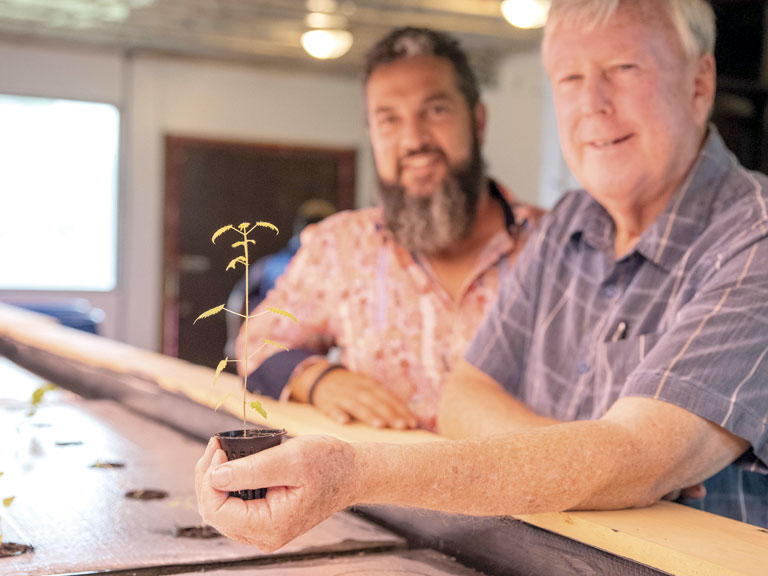County News
Kate’s Rest aquaponics

Demonstration project using twin technologies
Kate’s Rest’s first aquaponics project, begun in 2019, was off to a fledgling start when the pandemic struck just as it was up and running. As with much of the rest of the world, everything ground to a halt. However, even though it was operating for a very short time, there were a number of valuable lessons learned, particularly in the area of contamination control. In an enclosed and self-contained system in a humid environment, extreme care must be taken to prevent the growth of harmful fungi and stop the spread of pathogenic bacteria. Dr. Michael Shannon has been a long-time supporter of Kate’s Rest and was instrumental in providing a prototype water filtration system that recycles “grey water” to reduce the overall water usage in the main residence. He said that technology will be combined with the aquaponics to ensure there’s optimum quality water at every stage. In a typical aquaponics system, effluent from a tank where fish are being grown is treated with bacterial inoculants to break down the fish waste to nitrates, and the resulting liquid is fed to a tank where plants are being grown. The plant roots absorb the nutrients in the water, which is then recycled back to the fish tanks. At each stage there’s the possibility of cross-contamination, but the new combined system at Kate’s Rest is designed to eliminate that. “Every time the water goes through a different section of the growth facility, that water is cleaned and we add to it known amounts of various bacteria and nutrients. This is so that fungal spores from the plants don’t damage the fish, and bacteria from the fish don’t damage the plants. There’s nothing in the world right now that would match this. The centre of the universe, so to speak, is right here at Kate’s Rest,” said Dr. Shannon. The aquaponics technology comes from Water Farmers in Toronto, and the water purification system is from Purafy, using a graphene filter developed by Grafoid. Engineers and scientists from both companies are working together to build a prototype system. The project is being funded by the organization Meal A Day and the Huff Family Fund. Dr. Shannon said the system would be fully self-contained and simple to operate. He said that it was also scalable— from a small residential-sized unit to industrial scale. “This is all very exciting. Three years ago a system like this would not have been possible. You can now grow food year-round and this has the potential to address future food supply shortages,” he said.
Kate’s Rest founder Father Brian Hart envisions the aquaponics system as a way for residents of the facility to earn an income by selling the plants that they grow. After the proof-of-concept prototype is tested and refined, interested residents will get their own system, which they will operate as a farm business. Fr. Hart expects that vegetable produce would include things like basil and spinach. With the income they generate, Fr. Hart anticipates the residents would be able to purchase their own tiny home on the site, an outcome that would have been unthinkable for them a few years ago. In the meantime, the demonstration system is in the early stage of growing stinging nettle. Asked why this particular plant was chosen, Fr. Hart says it has a very high nutritional value, and to add some pizzazz to the project he is floating the idea of making a nettle-infused wine. On Tuesday last week, he invited Jason Sharpe, general manager of Huff Estates, to visit the prototype aquaponics facility. Underneath the grow lamps, dozens of stinging nettle seedlings looked vibrant and healthy as they grew in small containers of coconut fibre, with their roots picking up nutrients from the water in the tank below. It’s early days in the project yet, but keep an eye on the wine shelves for a special Kate’s Rest vintage sometime in the future.

Comments (0)